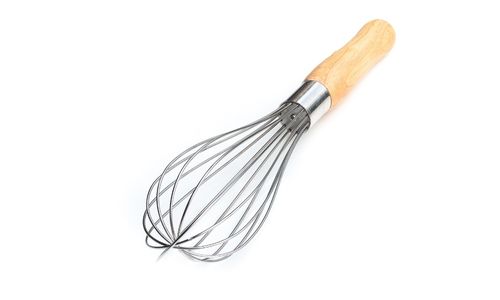A hand mixer is a versatile must-have electrical mixing device that comes in handy for more than just baking. You can use this appliance for just about anything, be it mixing, blending, beating, or whipping.
While one would hope to use the hand mixer attachments with other hand mixers, considering how the attachments last longer than the mixers themselves, we come bearing some bad news – hand mixer attachments are not universal (but more on that later).
This article will let you in on all the information you need about hand mixers and their attachments. So, keep reading to find out!
Why are hand mixer attachments not universal?

When it comes to hand mixers, there are only a few attachments that can be called universal. Hand mixer attachments vary according to the brand and the model of the hand mixer.
Moreover, there is no universal standard between the brands (and sometimes even within a brand). The specifications of your hand mixer model determine which attachments will fit and which won’t.
Generally, the making of the attachments is guided by two things – the power of the hand mixer and its life. The hand mixer’s fittings decide what can be attached and how it can be attached. So, most hand mixer attachments become unique due to two reasons –
- The size of the attachments varies, which also affects how they can be attached.
- The mechanism behind the attachment is not standard and thus differs between brands and models.
Which hand mixer attachments fit in other hand mixers?
While hand mixer attachments are not universal, some attachments can fit into other models of KitchenAid and some other brands. So, if you are lucky, you can find attachments that can be interchanged between
- Different models of the same brand.
- Different brands altogether.
To check if a hand mixer attachment is compatible with your hand mixer, check your mixer’s model number or the manual specifications of the attachments.
Some brands that are relatively flexible in this regard are –
Sunbeam
Agreed, Sunbeam does make it easy to find hand mixer attachments, but they are brand-specific. So, the attachments can only be interchanged between different models of hand mixers from Sunbeam only.
KitchenAid
While KitchenAid has a universal attachment fit guarantee. Sadly, it is only with regard to stand mixer attachments. However, KitchenAid does make attachments that can not only be used by many of its own hand mixer models but also fit in hand mixers of some other brands.
The most popular series from the brand is the KHM series, in which all the products are compatible with most hand mixer attachments produced by Whirlpool and KitchenAid.
Types of hand mixer attachments and how they are used
Hand mixers have various attachments, and they all serve different purposes. How do you choose which attachment to use? The answer depends on your mixture’s heaviness or thickness and consistency.
You need to know the purpose of each to avoid damaging your mixer or what you are cooking.
Flat beater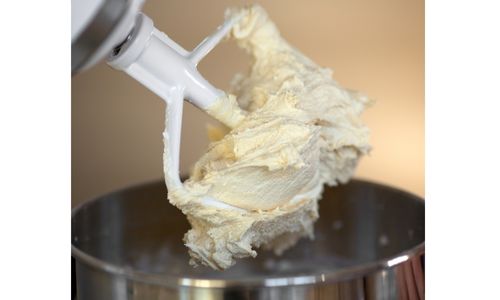
You will get attached to this attachment because of its high versatility and superior ability to mix almost any kind of mixture (sweet and savory).
Flat beaters also have the upper hand on whisks because flat beaters are stronger and allow lesser air to enter the batter.
When can you use a flat beater attachment?
- Laying the baking foundation – flat beaters are perfect for blending sugar and butter for a fluffy, creamy result.
- Heavy mixtures – these mixtures include frosting, meatloaf, mashed potatoes, cookie dough, etc.
Author’s note – When in doubt, bring the flat beater out (unless the mixture is extremely heavy such as bread dough).
Dough hook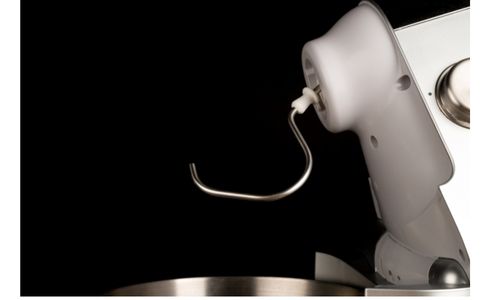
This attachment does the heavier lifting for you without overheating or damaging the hand mixer. The dough hook comes in two shapes – c-shape and spiral (both shapes can handle dough elasticity).
The tool works by completely replicating the kneading done by hand (such as turning, folding, etc.), except the attachment does it faster. When can you use a dough hook? It is most suitable for heavier doughs such as pasta, pizza, and bread.
The balloon whisk is an attachment that is perfect for lighter texture mixtures. It allows air and air bubbles to enter the mixture through the wired gaps to increase the mixture while making it smooth, fluffy, and light.
You can use this attachment for lighter mixtures such as –
- Mixing dry ingredients
- Fluffy frostings and light cakes
- Foaming milk for hot beverages or whipping cream
- Beating egg whites and making them fluffy
Author’s note – Since the balloon whisk is solely made of wires in the shape of a balloon, it is not sturdy enough for heavier batters.
Flex edge beater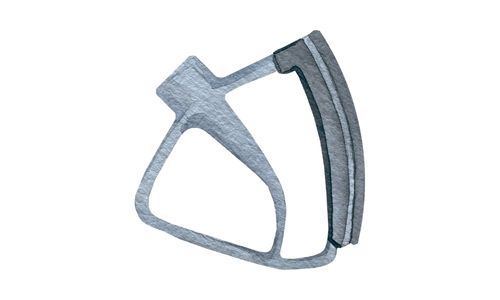
The difference between a flat beater and a flex edge beater is that a flex edge beater has one silicone side. This attachment gives mixtures a smooth, silky, and creamy texture.
This attachment is a game-changer because scraping the batter from the sides of the container becomes easier. Moreover, if your mixture is sticky because of ingredients such as honey, the flex edge beater attachment is your best friend because it does not allow mixtures to stick to the container.
Author’s note – flex edge beaters are better than flat beaters in the case of sticky mixtures.
Blending rod
A blending rod is perhaps the least common hand mixer attachment you will receive with your hand mixer. This long, thin rod has a blade at the bottom, which makes it convenient for chopping light ingredients such as bananas.
When can you use a blending rod? Blending rods work best for –
- Milkshakes and smoothies
- Making baby food
- Soup
Hand mixer vs. stand mixer – what is ideal for you?
While both hand mixers and stand mixers exist to reduce the effort required in mixing or combining ingredients, they both differ drastically – from their design to their capabilities. That said, there are some brands, such as Cuisinart, that combine the two (Cuisinart’s power advantage hand/stand mixer)
The choice between the two comes down to your purpose. If you are a casual baker or someone who is just beginning to cook, a hand-mixer is the perfect match for your small tasks. However, if you want to do more, stand mixers go a long way with their utility.
We have differentiated between the two to help you decide which appliance is ideal for you.
| Hand mixer | Stand mixer |
| Compact, portable, flexible, and light enough to be hand-held. | More heavy duty. Stands on a surface. |
| Only suitable for smaller tasks or batches of ingredients. | Can handle long mixing tasks; suitable for bigger tasks or larger batches. |
| Appropriate for light batter and soft dough. | Offer consistent stability and thorough mixing; can also be used for heavier or thicker dough. |
| Less versatile (come with lesser speed options and attachments) | More versatile (more speeds, attachments, and accessories). |
| Smaller motors; less powerful. | Bigger and better motors; more powerful. |
| Have to be held in hand at all times. | Self-sufficient (can run on their own). |
| Cheaper. | Expensive. |
Buying guide for hand mixers
When it comes to hand mixers, the best thing you can do is choose a hand mixer from a brand that has a good reputation according to you and in the market (reading customer reviews goes a long way). The following are some points to keep in mind –
Performance over price
It is not necessary that the more expensive brands will offer you better performance. A higher price does not ensure better quality. So, pay attention to the specifications of the hand mixer to decide. On similar lines, choose practicality over the looks of the hand mixer.
Weight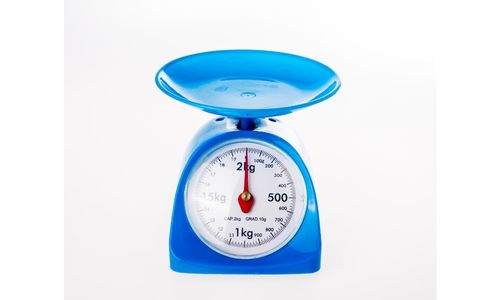
Since it will be hand-held, you should look for a lightweight hand mixer (around 600-700g). That said, try to find a hand mixer that is moderate; hand mixers should neither be too heavy nor too light.
Another vital thing to keep in mind is checking the base or side of the hand mixer on which it will rest when it is not used. Your hand mixer will keep tipping over if the base is not big or wide enough.
Speed settings
Check the speed settings of the hand mixer – even if there are not many speed settings, ensure that the slow setting is, in fact, slow.
Moreover, the spinning direction of your hand mixer should be inside out so that the ingredients get pushed up and the air is allowed into the mixture.
FAQs
1. Why is it important to choose the correct hand mixer attachments?
The attachment’s structure dictates your mixture’s texture. For instance, balloon whisks are perfect for attaining fluffy textures because they allow air to enter the mixture. It is vital to choose the right attachment to attain the consistency and texture you desire for your mixture while avoiding damaging your mixer.
2. What is the use of hand mixers?
Hand mixers are lightweight mixers that do heavy-lifting for you. These convenient mixers can blend, whip, knead, beat, and mix ingredients. You can use hand mixers to make various things such as whipped cream, cake, mashed potatoes, dough, etc.
3. What attachment do I use for cake batter?
While the best attachment for a fluffy, well-mixed cake batter would be a flat beater, you can also use a flex edge beater if your cake batter has honey or syrup and is a little sticky. Moreover, with a flex edge beater, it will be easy to scrape batter from the sides of the container.
Conclusion
Simply put, no hand mixer attachment is universal due to the lack of a universal standard for both mixers and attachments – no one attachment will fit all hand mixers.
That said, finding a replacement or new attachment for your hand mixer becomes easy when you know the model number of your mixer or the manual specifications of the attachment. So, don’t worry and mix away!

